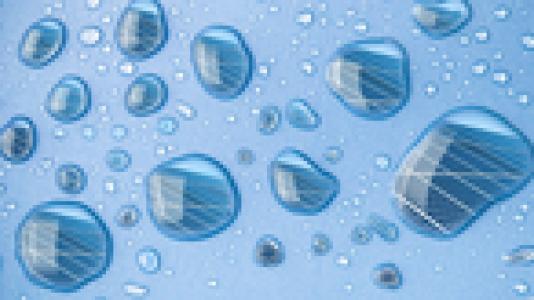
Here, a multistage atomistic-coarse-grained approach is used, complemented by circular dichroism/infrared spectroscopy and dynamic light scattering experiments to highlight the dual nature of water in driving the self-assembly of peptide amphiphiles (PAs).
These small assemblies of organic molecules have parts that are hydrophobic, or water-fearing, while other parts are hydrophilic, or water-loving. Because of their dual nature, micelles organize themselves into spheres that have their hydrophilic parts turned out while their hydrophobic parts are shielded inside. Water is shown to serve another previously undiscovered role as these micelles coalesce to spontaneously form long fibers.
In a study led by Center for Nanoscale Materials (CNM) researchers, supercomputer simulations and lab-based experiments showed that water serves as an invisible cage for the growth of the micelle fiber. Computations also examined how zinc porphyrins could possibly become incorporated into the fiber. The study could help understand how light-harvesting molecules are incorporated into the micelle fiber as it assembles, which would be a key step to understanding some forms of artificial photosynthesis.
To effectively simulate the growth of the micelles and micelle fibers, coarse-grained simulations, which showed more general dynamics over relatively long periods of time, as well as atomistic simulations, which showed the motion of individual water molecules over very brief stretches, were performed with the Argonne Leadership Computing Facility (ALCF) Mira, the NERSC and CNM’s cluster Carbon.
S.A. Deshmukh, L.A. Solomon, G. Kamath, H.C. Fry, S.K.R S. Sankaranarayanan, “Water ordering controls the dynamic equilibrium of micelle–fibre formation in self-assembly of peptide amphiphiles,” Nature Communications, 2016, 7, 12367.